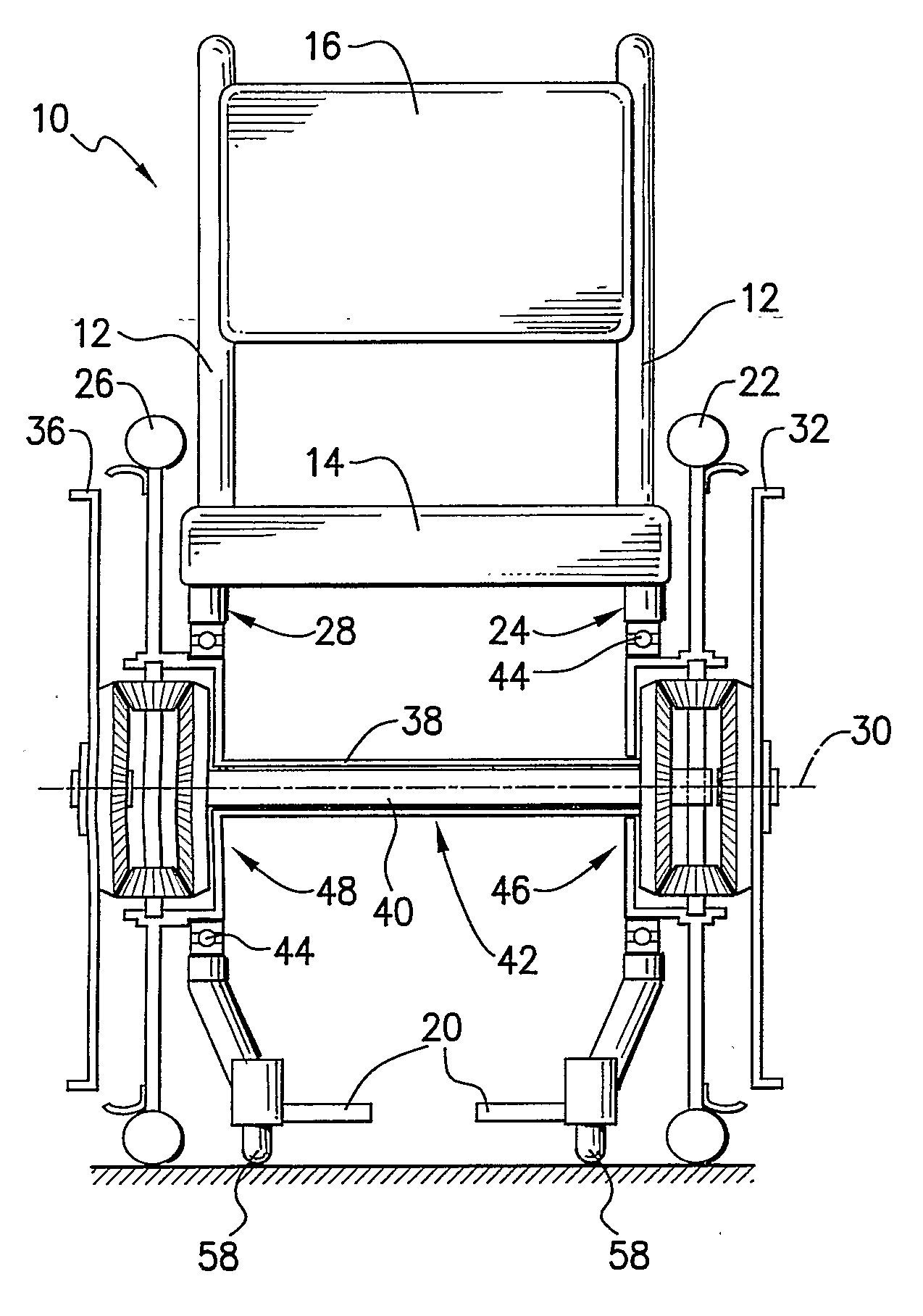Manually Propelled Wheelchair Device
a wheelchair and motor technology, applied in the field of manual-operated wheelchairs, can solve the problems of not collapsing or not, the muscle power of a single arm cannot be delivered to a single drive wheel of the wheelchair, and the occupant must use both arms, so as to reduce the overall dimension
- Summary
- Abstract
- Description
- Claims
- Application Information
AI Technical Summary
Benefits of technology
Problems solved by technology
Method used
Image
Examples
Embodiment Construction
[0067]In FIG. 1 there is shown a wheeled conveyance 10 of any suitable form, for example a wheelchair as shown. Wheelchair 10 includes a frame 12 which carries and supports a seat 14, a backrest 16 and a pair of armrests (not shown). Armrests usually extend outwardly from frame 12, near backrest 16, in a direction substantially parallel to the plane of seat 14. Wheelchair 10 may also include a pair of hand-push handles 18 (see for example FIG. 5) disposed at the uppermost points of frame 12 and which may extend outwardly therefrom in a direction substantially perpendicular to frame 12 and away from the rear of wheelchair 10. Mounted to the base of frame 12 are footrests 20 which are disposed in a position suitable to support the feet of an occupant (not shown). Although shown in FIG. 1 as being two separate footrests 20, it should be understood that a single footrest 20 (see FIG. 5) could be included and the invention is therefore not limited to the specific example as shown.
[0068]W...
PUM
 Login to View More
Login to View More Abstract
Description
Claims
Application Information
 Login to View More
Login to View More - R&D
- Intellectual Property
- Life Sciences
- Materials
- Tech Scout
- Unparalleled Data Quality
- Higher Quality Content
- 60% Fewer Hallucinations
Browse by: Latest US Patents, China's latest patents, Technical Efficacy Thesaurus, Application Domain, Technology Topic, Popular Technical Reports.
© 2025 PatSnap. All rights reserved.Legal|Privacy policy|Modern Slavery Act Transparency Statement|Sitemap|About US| Contact US: help@patsnap.com



